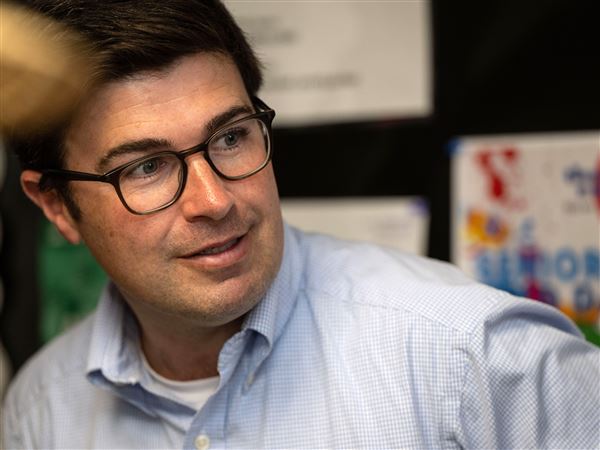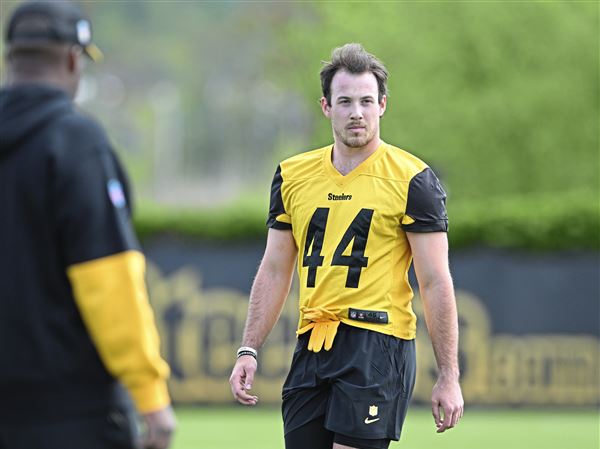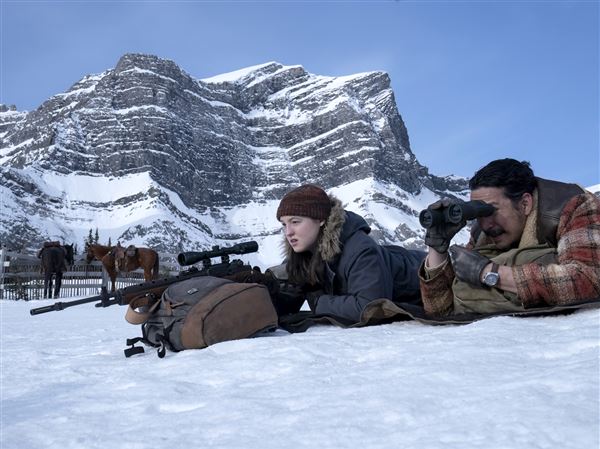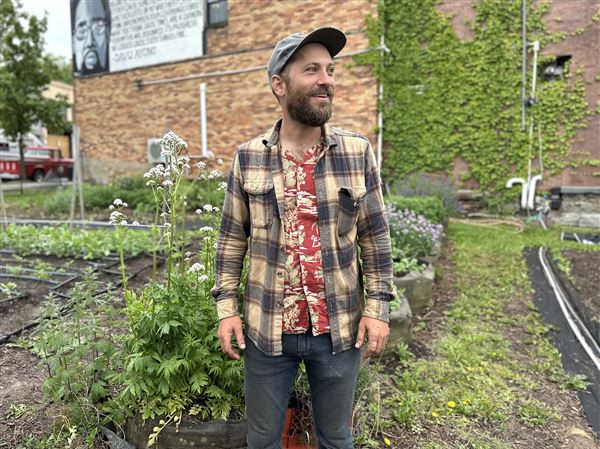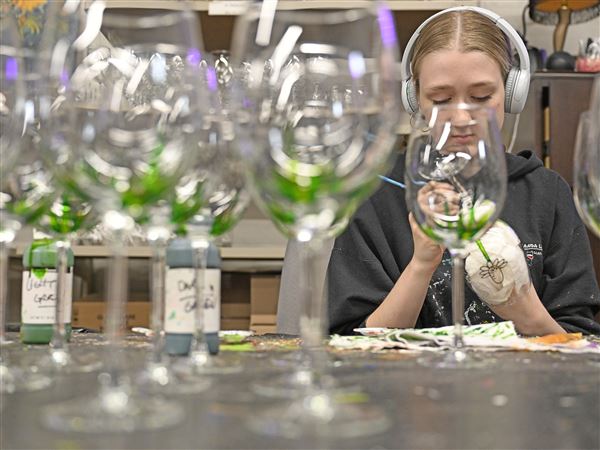If you want to help teachers become more effective in the classroom, ask students what they think of their teachers.
That's a premise behind the efforts of Pittsburgh Public Schools to survey two classes of most K-12 teachers this school year.
"We believe that students who are in classrooms for the majority of the time and have classroom experience can provide teachers with valuable feedback," said Jerri Lippert, chief academic officer for the district.
She said observers spend, at most, a few hours in a teacher's classroom, but students are there day after day.
The surveys are part of an effort to measure effective teaching and to provide teachers with useful information.
The district is working toward a new way to evaluate teachers, including classroom observation, student academic growth and student outcomes.
The results of the student surveys ultimately may become a portion of how teachers are evaluated.
Ms. Lippert said the district is "committed" to doing the surveys. "The decision has to be made as to how much it counts for teacher evaluation."
Nina Esposito-Visgitis, president of the Pittsburgh Federation of Teachers, said she is "cautiously learning" about the survey.
"It's subject to so much interpretation. Some kids think you're tough on them. You're trying to help. How will they interpret that?" she said.
This effort has implications for other districts because statewide legislation has been proposed calling for the use of multiple measures in teacher evaluations. A challenge is finding meaningful measures.
For the student surveys, the district uses Tripod -- named to represent the importance of three practices: content, pedagogy and relationships -- which was developed by Ron Ferguson, a senior lecturer in education and public policy at Harvard University.
The survey has gained attention at least in part because the Measures of Effective Teaching project -- funded by the Bill & Melinda Gates Foundation -- chose it as part of its study.
In a report issued in January, the MET project stated that combining classroom observation, student achievement gains and student feedback is better than just one measure alone.
The project report said the combination increases the ability to predict how a teacher will do, provides diagnostic feedback a teacher can use and is more reliable.
An earlier project report said the results of student surveys show students "seem to know effective teaching when they experience it."
It added, "Most important are students' perception of a teacher's ability to control a classroom and to challenge students with rigorous work."
Pittsburgh, which has a $40 million Gates grant to improve the effectiveness of teachers, plans to survey at least two classes each of about 2,000 of the district's 2,300 teachers.
The surveys will include two classes of teachers of record except in certain cases, such as those who teach classes with fewer than 10 students or teach at three special purpose schools: Pioneer, Conroy and the Student Achievement Center.
There are three versions of the survey: one for K-2 with 41 statements, another for grades 3-5 with 63 statements and a third for grades 6-12 with 127 statements.
For the K-2 survey, another teacher reads the questions. For the other surveys, the teacher gives the survey to his or her own classes. The surveys are scored independently.
On the surveys, students are asked to reflect on statements, such as "I like the things that we are learning in this class" and "My teacher wants us to use our thinking skills, not just memorize things."
The youngest ones answer "yes," "maybe" or "no." The others have a range from "totally true" to "totally untrue."
None of the statements ask if the student likes the teacher -- or if the teacher is popular. Instead, they are based on what educators think is effective teaching.
The questions concerning individual teachers are drawn from seven categories, which are referred to as the seven C's: captivate, care, challenge, clarify, confer, consolidate and control.
Other portions of the survey look at conditions outside of school and learning engagement.
On the K-2 survey, students are asked, "How many books do you think are in the room where you sleep?"
The child can answer none, one to 10, 11 to 25 or 25 plus.
Mary Wolfson, district project manager, said this question reflects how many books belong to the child and with which the child is free to interact.
Another question asks, "Is there a computer at your house?"
The answers are none, one or more than one.
Some examples of statements about student engagement on the K-2 survey include "I try to as hard as I can to learn in school" and "I can do even the hardest work if I try."
The district first piloted Tripod in 2009-10 with 250 teachers. Ms. Wolfson said those result revealed a "very wide distribution" of results.
Last year, student surveys were given in the classrooms of about 50 teachers who were in the Promise-Readiness Corps -- which focused on ninth-graders -- to help the teachers gauge how they were doing.
For the surveys being implemented districtwide this school year, the first round was in December; the next will be in April. Results are expected in June.
This year, most individual teacher results will be available only to the teachers themselves.
The exception is most of the nearly 100 teachers in career-ladder positions, which provide extra pay for extra responsibilities. Their results will play a role in determining whether they stay in their positions.
Districtwide and schoolwide results are expected to be more widely available.
Rob Ramsdell, vice president of Cambridge Education, which operates the survey in partnership with Mr. Ferguson, said the survey initially was designed to help with professional development, but now some districts are looking to include it in teacher evaluation.
If it is included, he thinks it should be a small part and based on multiple classes of students, preferably over multiple years. He said schools in Memphis, Tenn., decided to use the Tripod results as 5 percent of a teacher's evaluation.
Mr. Ramsdell met last week with teachers and principals who are part of the school leadership teams for RISE -- Research-Based, Inclusive System of Evaluation -- the district's new evaluation system.
Some raised questions about whether students understood the questions clearly.
Some wondered about students who just bubble in a form or don't want to fill in another form after they already did one in another class. Some thought the list of questions was too long.
Mr. Ramsdell said the answers are studied for consistency, and those that are obviously filled out incorrectly are thrown out.
In small schools, he said it may be impossible to see that students don't get surveyed for more than one teacher. He said the questions are ordered so that the ones about teaching in particular are near the beginning when test-takers are fresher.
This isn't the first time students have ever been asked their opinions. Some teachers ask their classes to reflect on their learning and what activities they thought were most helpful.
Sean Mascellino, a seventh-grade English language arts teacher at Pittsburgh South Hills 6-8, said he regularly asks students to reflect on their learning.
"I think it's important to know what your kids think of you and what you're doing in your class," he said.
Shawn Stromberg, who teaches science to grades 2, 3 and 4 at Pittsburgh Brookline K-8, said he administered the survey to another teacher's students and was careful to read the questions in an even tone of voice.
"I think it's a great idea for you to know where the kids see you," he said. "I know the way students feel about teachers; it does affect their [students'] performance."
When students know teachers care about them, he said, "They want to do their best for those teachers."
First Published: March 5, 2012, 10:00 a.m.
